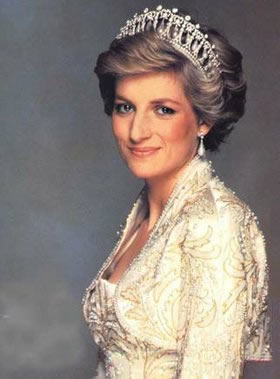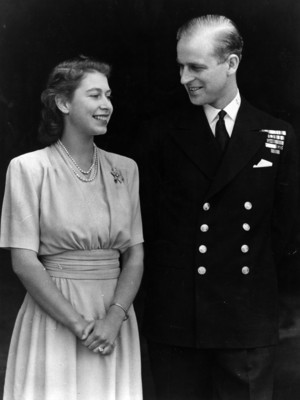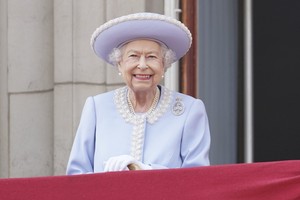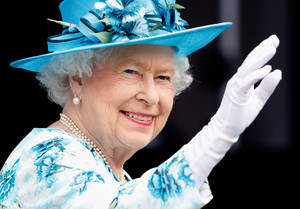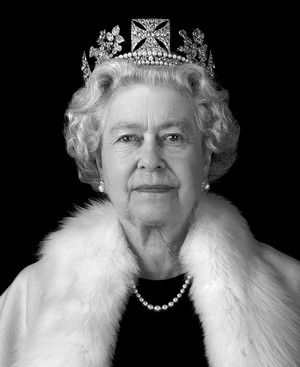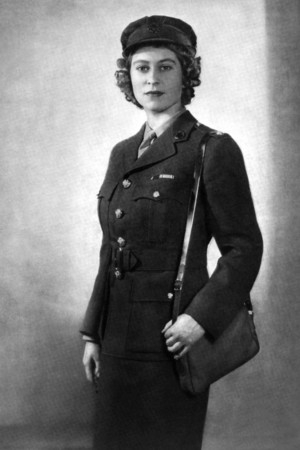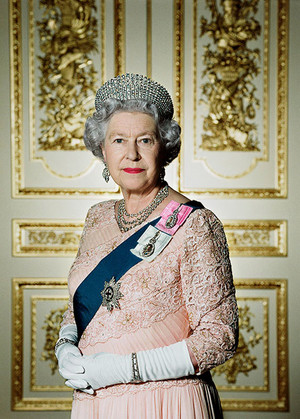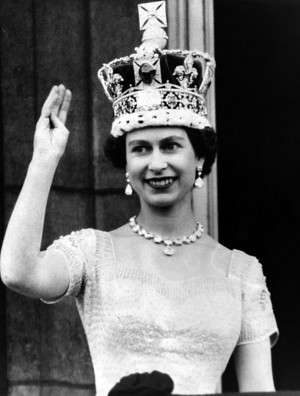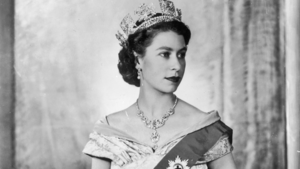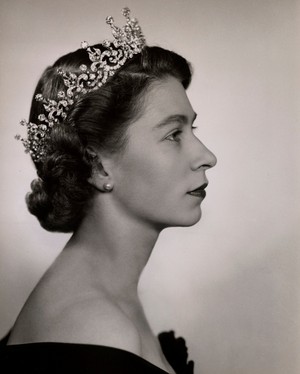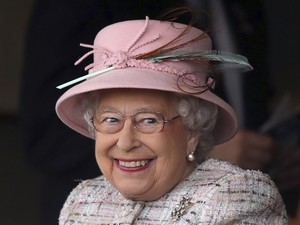On 22 February 1540 a queen was crowned. She was Marie de Guise, mother of Mary queen of Scots, one of the most famous women in Scottish history. Sadly, Mary's failures eclipse the successes of her mother, a far better politician and leader in her own right. Qualities that were useful in everyday life but proved crucial in dealing with the Scottish nobility upon the death of her husband, King James V.
King James was an intelligent, if emotionally insecure, monarch who was loved oleh his people if not oleh his nobility. And after losing the battle of Solway Moss, he is berkata to have died of a broken heart.
He'd already lost one bride before marrying Marie; Princess Madeleine of Valois, daughter of Francis I, who died less than two months after landing in Leith. Marie married James V a tahun later on 9th May 1538. Quickly Marie gave James an heir and a spare within a tahun of each other only for both sons to die within hours of one another. Before long Marie was pregnant again and on 8th December 1542 she gave birth to her only daughter, Mary. While James died of a broken heart, his queen had no time to yield to grief. Marie was made of far stronger stuff.
French Connection
Before marrying the King of Scots, she had already buried one husband and an infant son, and left her surviving one behind in France. After marrying James V she also mourned their two sons, James and Robert. When her daughter was declared queen of Scots at six days old, Marie was determined to secure Marys future as the first queen Regnant of Scotland in her own right. To do this Marie had to implore the shrewd politician within her and her connections in France.
These connections proved crucial when the English King wanted the new queen as a trophy in his scheme to obtain Scotland under his control. Henry VIII is perhaps one of the most notorious Kings in history; married six times only to be successfully succeeded oleh Elizabeth I. Henry desired Mary as a bride for his son, the future Edward VI (1547-1552). While it might indeed be a good match, Marie de Guise was not about to offer up her daughter as a sacrificial lamb. Marie could maneuver and manipulate just as well as any politician. While this may not be a positive trait to most people, it was an extremely useful tool in keeping her daughter close and safe.
The Opposition
In this, she faced opposition, especially from the Scots nobility. A fickle crowd, the Scots nobility was made up of men related in some way atau other to the Stewart Kings, often making them arrogant and overbearing but the lebih important of them was the Earl of Arran, selanjutnya in line to the crown after little Mary. Arran was a weak individual who changed sides like a wind in a blizzard. But in this capriciousness he was also predictable in his desire for power, and Marie de Guise used this to gain his support in accepting French support against the English.
They would need the extra help for the English had crossed the border only to wreak havoc upon the Scots, pillaging and abusing the land and its people. And the worst was yet to come.
With the forcefulness of the English, even after Henry VIII's death, Marie realised her daughter would never be aman, brankas on Scottish soil so she struck a deal with the french that forced her to give up her only daughter. After five children, Marie had lost three and been forced to give two up for their security. As a result, Marie was forbidden the joys of truly being a mother, instead taking solace in ruling a foreign country in the name of an absent monarch. Sadly, her efforts in securing an alliance between Scotland and France, as well as Scots independence within that, went underappreciated when the protestant reformation gained momentum.
Vilification
After years of ruling the Scots, she was vilified for her efforts through propaganda, sadly dying in isolation at Edinburgh kastil, castle with only her enemies there as she died on 11th June 1560. She was shipped to France where her only surviving child attended her funeral at Fécamp before being interred at the church of Saint-Pierre-les-Dames, Reims.
Tragically Marie's work on her daughter's behalf, were in vain. Mary's personal rule lasted only 7 years, ending in skandal and forced abdication. Alas, though the crown rested on Mary's head, it was Marie who insured it was there upon her return through her intelligence and determination.
When Marie de Guise was crowned at Holyrood Abbey on 22 February 1538 she had little idea of the burden she would carry, ruling a country that would prove ungrateful for her efforts to secure their independence.
Further Reading:
link
link
link
King James was an intelligent, if emotionally insecure, monarch who was loved oleh his people if not oleh his nobility. And after losing the battle of Solway Moss, he is berkata to have died of a broken heart.
He'd already lost one bride before marrying Marie; Princess Madeleine of Valois, daughter of Francis I, who died less than two months after landing in Leith. Marie married James V a tahun later on 9th May 1538. Quickly Marie gave James an heir and a spare within a tahun of each other only for both sons to die within hours of one another. Before long Marie was pregnant again and on 8th December 1542 she gave birth to her only daughter, Mary. While James died of a broken heart, his queen had no time to yield to grief. Marie was made of far stronger stuff.
French Connection
Before marrying the King of Scots, she had already buried one husband and an infant son, and left her surviving one behind in France. After marrying James V she also mourned their two sons, James and Robert. When her daughter was declared queen of Scots at six days old, Marie was determined to secure Marys future as the first queen Regnant of Scotland in her own right. To do this Marie had to implore the shrewd politician within her and her connections in France.
These connections proved crucial when the English King wanted the new queen as a trophy in his scheme to obtain Scotland under his control. Henry VIII is perhaps one of the most notorious Kings in history; married six times only to be successfully succeeded oleh Elizabeth I. Henry desired Mary as a bride for his son, the future Edward VI (1547-1552). While it might indeed be a good match, Marie de Guise was not about to offer up her daughter as a sacrificial lamb. Marie could maneuver and manipulate just as well as any politician. While this may not be a positive trait to most people, it was an extremely useful tool in keeping her daughter close and safe.
The Opposition
In this, she faced opposition, especially from the Scots nobility. A fickle crowd, the Scots nobility was made up of men related in some way atau other to the Stewart Kings, often making them arrogant and overbearing but the lebih important of them was the Earl of Arran, selanjutnya in line to the crown after little Mary. Arran was a weak individual who changed sides like a wind in a blizzard. But in this capriciousness he was also predictable in his desire for power, and Marie de Guise used this to gain his support in accepting French support against the English.
They would need the extra help for the English had crossed the border only to wreak havoc upon the Scots, pillaging and abusing the land and its people. And the worst was yet to come.
With the forcefulness of the English, even after Henry VIII's death, Marie realised her daughter would never be aman, brankas on Scottish soil so she struck a deal with the french that forced her to give up her only daughter. After five children, Marie had lost three and been forced to give two up for their security. As a result, Marie was forbidden the joys of truly being a mother, instead taking solace in ruling a foreign country in the name of an absent monarch. Sadly, her efforts in securing an alliance between Scotland and France, as well as Scots independence within that, went underappreciated when the protestant reformation gained momentum.
Vilification
After years of ruling the Scots, she was vilified for her efforts through propaganda, sadly dying in isolation at Edinburgh kastil, castle with only her enemies there as she died on 11th June 1560. She was shipped to France where her only surviving child attended her funeral at Fécamp before being interred at the church of Saint-Pierre-les-Dames, Reims.
Tragically Marie's work on her daughter's behalf, were in vain. Mary's personal rule lasted only 7 years, ending in skandal and forced abdication. Alas, though the crown rested on Mary's head, it was Marie who insured it was there upon her return through her intelligence and determination.
When Marie de Guise was crowned at Holyrood Abbey on 22 February 1538 she had little idea of the burden she would carry, ruling a country that would prove ungrateful for her efforts to secure their independence.
Further Reading:
link
link
link






